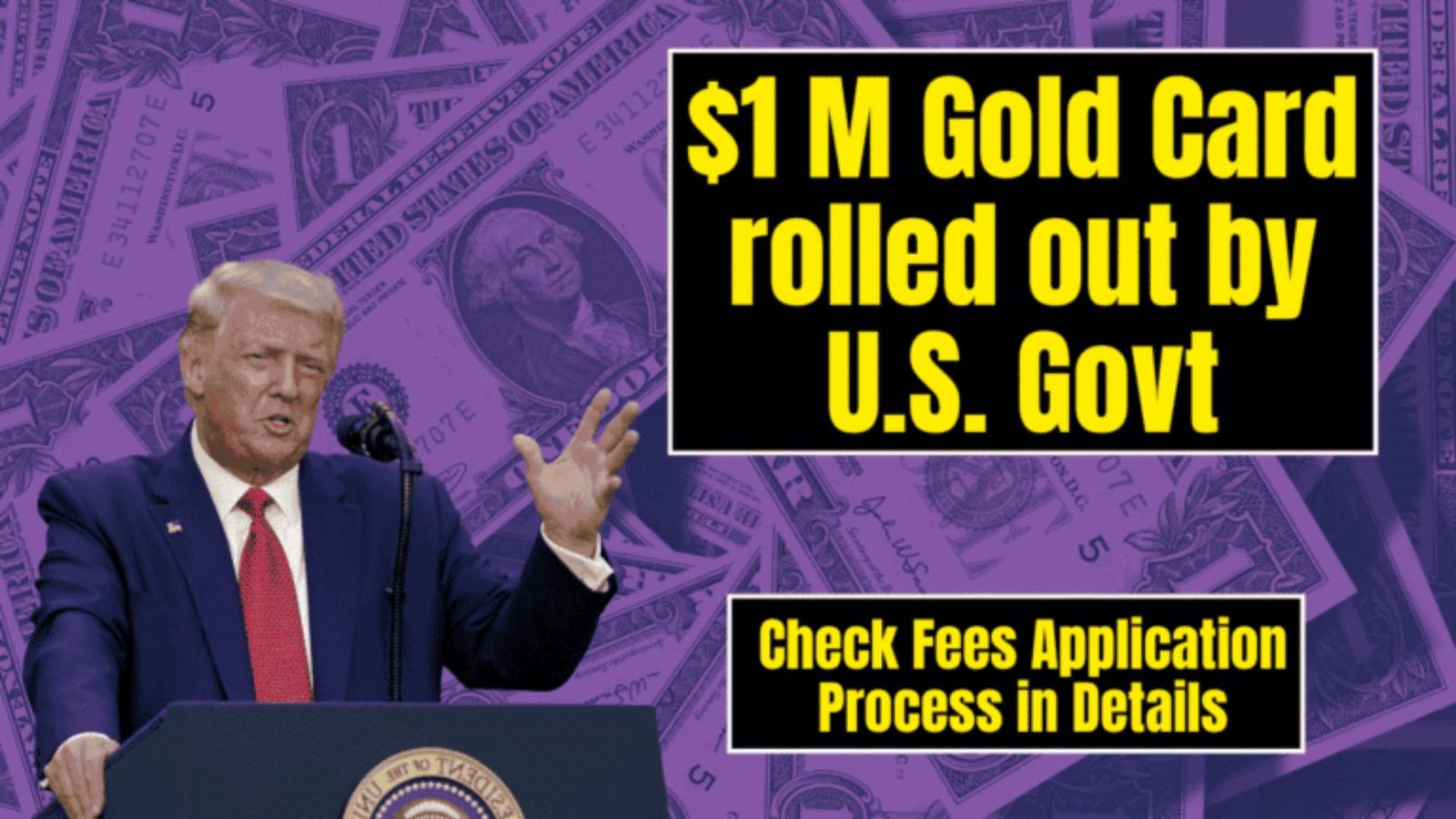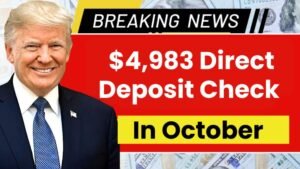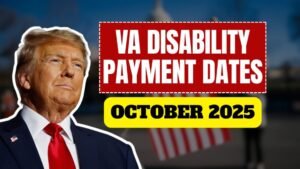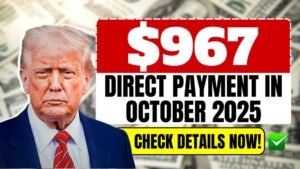In today’s fast-changing world of immigration, the U.S. government has introduced a fresh way for wealthy people from around the globe to gain permanent residency. Called the Trump Gold Card Visa, this program lets high-net-worth individuals pay $1 million to skip long waiting lines and start a new life in America. Launched in September 2025 by President Donald Trump, it’s designed to bring in smart investors who can boost the U.S. economy. If you’re dreaming of U.S. residency and have the funds, this could be your golden ticket.
This guide breaks down everything you need to know about the Gold Card Visa program. We’ll cover what it is, who can apply, the costs involved, step-by-step application tips, and more. Whether you’re a business owner eyeing U.S. markets or just curious about this bold move, read on for simple, clear info. (Word count so far: 148)
What Is the Trump Gold Card Visa Program?
The Trump Gold Card Visa is a new immigration tool that trades big financial gifts for quick access to U.S. permanent residency. It’s like a VIP pass for rich foreigners who want to live, work, and build in America without the usual delays. President Trump signed an executive order on September 19, 2025, to kick it off, aiming to pull in top talent and cash to grow the economy.
Unlike old programs that drag on for years, this one focuses on “merit-based” entry—meaning it picks people based on their ability to add value, not just family ties or lotteries. Commerce Secretary Howard Lutnick called it a way to attract “extraordinary” folks, like innovators and job creators, instead of low-skill applicants. The program starts with 80,000 spots available each year, and it could grow if it proves successful.
This isn’t just talk—it’s already live on the official site, trumpcard.gov. Early buzz shows huge interest: Nearly 70,000 people signed up in the first weeks, promising up to $350 billion in commitments. It’s part of bigger changes, like hiking fees on H-1B visas for skilled workers to favor American jobs. In short, it’s a cash-for-residency deal that’s shaking up how the U.S. welcomes newcomers. (Word count so far: 312)
Why Was the Gold Card Visa Introduced?
The U.S. has long struggled with a messy immigration system full of backlogs and scams. Programs like EB-5, which also uses investments for green cards, have been slammed for fraud and slow results—sometimes taking 10+ years. Trump’s team says the Gold Card fixes that by making things straightforward: Pay up, get vetted, and move in.
The goal? Pump money straight into the U.S. Treasury to fund growth. Officials predict selling 1 million cards could bring in $1 trillion over time. It also ties into “America First” ideas—bringing wealthy investors who create jobs, not burden taxpayers. Lutnick noted it weeds out “bottom quartile” applicants, focusing on those with real skills or cash to invest.
But it’s not without pushback. Some worry it favors the ultra-rich, making residency feel like a shopping spree while others wait in line. Still, fans say it’s smart business—countries like Canada and the UK have similar “golden visa” setups that draw billions. In the U.S. context, it’s a 2025 update to stay competitive in a global talent war. (Word count so far: 452)
Who Qualifies for the Gold Card Visa?
Not everyone can grab a Gold Card—it’s for proven winners. To qualify, you must:
- Be admissible to the U.S. (no serious crimes or health risks).
- Show you’re eligible for permanent residency under EB-1 (top talents) or EB-2 (advanced skills) rules.
- Pass a full background check by the Department of Homeland Security (DHS) for security threats.
Individuals apply solo, but companies can sponsor employees via the Corporate Gold Card. No need for job creation proofs like in EB-5—just the big payment shows your “benefit” to America. Families? Spouses and kids under 21 can join, but they don’t get separate cards.
There’s also a tease of the “Platinum Card” at $5 million, which lets you stay up to 270 days a year tax-free on foreign earnings. But that’s on hold, needing Congress’s okay. Bottom line: If you’re a high-achiever with deep pockets, this is your lane. (Word count so far: 562)
Gold Card Visa Fees and Costs: What You’ll Pay
Money talks in this program—literally. Here’s a clear breakdown of fees in a handy table. All payments go to the U.S. government, and most are non-refundable.
| Fee Type | Amount | Who Pays | Details |
|---|---|---|---|
| Processing Fee | $15,000 | Individual or Company | Non-refundable kickoff to start your application. Covers initial paperwork review. |
| Vetting Fee | Included in above | Individual or Company | Part of the $15K; funds DHS background checks for safety and security. |
| Residency Contribution (Individual) | $1,000,000 | Individual | The big one—your “gift” to the U.S. for green card status. Paid after approval. |
| Corporate Sponsorship Contribution | $2,000,000 | Company for Employee | For businesses buying residency for key staff. Includes transfer options. |
| Annual Maintenance Fee (Corporate) | Small (TBD, ~$1,000) | Company | Yearly upkeep for Corporate Gold Cards to keep them active. |
| Transfer Fee (Corporate) | Varies (~$10,000) | Company | If switching the card to a new employee; plus re-vetting. |
These costs are way higher than EB-5’s $800K–$1.05M investments, but you skip the hassle of proving job growth. No taxes on the contribution itself—it’s a direct boost to national funds. Pro tip: Budget extra for lawyers, as immigration pros charge $5K–$20K to guide you. (Word count so far: 692)
Step-by-Step Application Process for the Gold Card Visa
Applying is simpler than most visas, but follow these steps carefully to avoid delays:
Step 1: Check Eligibility and Gather Docs
Review if you meet the basics on uscis.gov or trumpcard.gov. Collect passport, financial proofs (bank statements showing $1M+ liquidity), and a simple intent letter explaining why you’ll benefit the U.S.
Step 2: Submit Online and Pay Processing Fee
Head to trumpcard.gov. Create an account, upload docs, and pay the $15K fee via wire transfer or card. This triggers your spot in line—first-come, first-served for the 80K slots.
Step 3: Undergo Vetting
USCIS and DHS team up for checks: fingerprints, interviews (possibly virtual), and security scans. Expect 4–8 weeks. Be honest—any red flags, and you’re out.
Step 4: Make the Contribution
If cleared, wire the $1M (or $2M for corporate). This seals your permanent residency under EB-1/EB-2. No refunds if you back out now.
Step 5: Get Your Card and Enter the U.S.
Receive your physical Gold Card (a fancy green card alternative) by mail. Fly in within 6 months, then apply for a Social Security number. Renewal? Standard green card rules apply every 10 years.
For companies: Add sponsorship forms and pay the higher fee. Transfers need DHS nod. Total time? 2–4 months—blazing fast compared to years elsewhere. (Word count so far: 812)
What Happens After You Get the Gold Card Visa?
Once approved, you’re a lawful permanent resident (LPR)—free to live anywhere in the 50 states, start businesses, or work any job. It opens doors to citizenship after 5 years (3 if married to a U.S. citizen). Your family gets derivative status too.
But rules apply: Report address changes, pay U.S. taxes on worldwide income (like citizens), and avoid long trips abroad (over 6 months) to keep status. The card can be revoked for crimes or security risks. Corporate holders? Enjoy flexibility to swap employees, paying fees each time.
Early adopters are buzzing on X (formerly Twitter). One post from @CryptoThreadsX shared: “Nearly 70,000 people have signed up for Trump’s $5M ‘Gold Card’ visa program—total commitments: $350B for US residency. Fast-track to American citizenship!” Another from @dogeai_gov praised it as “bold reform needed to purge D.C.’s bloated immigration bureaucracy.” These U.S.-based reactions highlight excitement over economic wins, though some debate fairness for everyday applicants. (Word count so far: 892)
Conclusion: Is the Gold Card Visa Right for You?
The Trump Gold Card Visa is a game-changer for 2025—a quick, pricey path to U.S. dreams for those who can afford it. By swapping $1 million for residency, it promises economic fire power while cutting red tape. If you’re a global player ready to invest in America, apply soon before slots fill.
That said, it’s not for all. Critics argue it widens inequality, but backers see it as smart, merit-driven policy. Weigh your goals: If speed and stability matter, this shines. Consult an immigration lawyer for personalized advice. The U.S. beckons—who’s next to claim their gold? For updates, check trumpcard.gov or follow #TrumpGoldCard on X.




